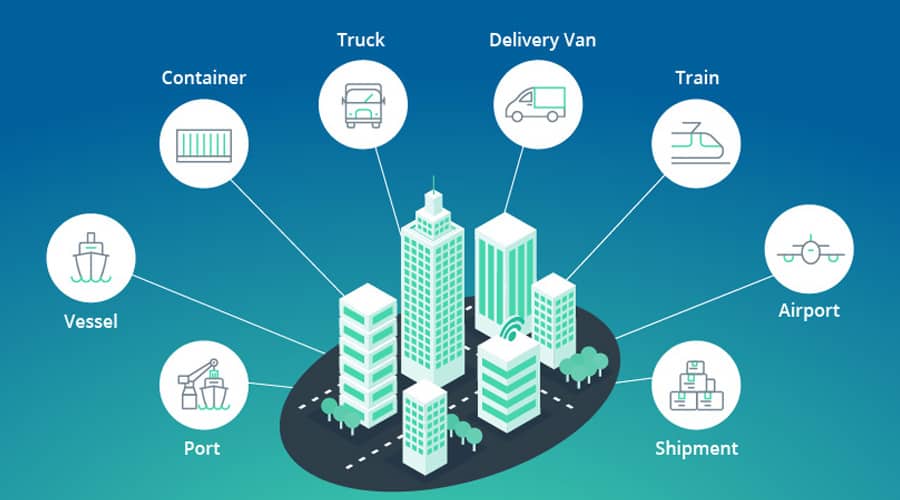Digital Twins in Logistics: India’s Entry into Next-Gen Supply Chains
India’s logistics sector is at a turning point. With government initiatives like Gati Shakti, growing private investment, and a vibrant startup ecosystem, digital transformation is not a distant goal—it’s happening right now. One of the most transformative technologies leading this shift is Digital Twin technology. Though still relatively new in the Indian context, digital twins are redefining supply chain operations, offering real-time insights, predictive maintenance, and enhanced efficiency across the board.
In this blog, we explore how India is adopting digital twins in logistics, their benefits, use cases, and what it means for local and international businesses operating in the country.
🔍 What Are Digital Twins?
A digital twin is a virtual replica of a physical object, system, or process. In logistics, this can mean creating a live model of a warehouse, transportation route, or even an entire supply chain network. By collecting real-time data from IoT sensors, RFID, GPS, and ERP systems, digital twins allow businesses to simulate, analyze, and optimize operations without disrupting actual workflows.
According to a report by MarketsandMarkets, the digital twin market is expected to grow from $10.1 billion in 2023 to over $110 billion by 2028, and logistics is one of its fastest-growing verticals.
🇮🇳 India’s Logistics Sector: A Digital Renaissance
India’s logistics sector contributes 14.4% to its GDP, according to the India Brand Equity Foundation (IBEF). With the push for Multimodal Logistics Parks (MMLPs), Dedicated Freight Corridors (DFCs), and the Unified Logistics Interface Platform (ULIP) under the PM Gati Shakti plan, the sector is primed for digital disruption.
As India becomes a global trade hub, the need for data-driven logistics becomes non-negotiable. This is where digital twins offer a leap forward—moving from reactive supply chain models to predictive and autonomous systems.
💡 How Digital Twins Enhance Indian Supply Chains
Here are several ways digital twins are improving logistics in India:
1. Warehouse Management
Digital twins simulate warehouse layouts, workforce movements, and inventory tracking. Companies like Flipkart and Amazon India are already piloting digital twin models to reduce picking times and optimize space usage.
2. Predictive Maintenance
With real-time diagnostics on fleets, digital twins can predict mechanical issues before breakdowns occur, especially important for logistics players managing long-haul trucks in India’s remote regions.
3. Supply Chain Resilience
By simulating supply chain scenarios (e.g., port delays or highway closures), logistics firms can reroute cargo instantly. This is crucial in India, where regional infrastructure varies widely in quality.
4. Last-Mile Optimization
Digital twin tech integrates GPS, traffic data, and consumer behavior analytics to optimize last-mile delivery in congested Indian cities like Mumbai and Bangalore.
5. Carbon Footprint Monitoring
Sustainability is gaining traction in Indian logistics. Digital twins allow companies to model emissions, track fuel consumption, and simulate greener logistics strategies.
🏭 Use Cases in Indian Industry
🔹 Delhivery
India’s largest logistics tech company, Delhivery, is investing in AI and simulation technologies, setting the stage for digital twin implementation across its nationwide warehousing and delivery networks.
🔹 Tata Steel
Tata Steel, which runs complex logistics operations from mines to ports, uses digital twins for fleet tracking and route optimization—leading to significant fuel and time savings.
🔹 Government Infrastructure Projects
Under Gati Shakti, the Indian government is piloting digital twin models to simulate multi-modal transport systems, integrating rail, road, and inland waterways to boost efficiency.
🌐 Global Impact: Why International Businesses Should Pay Attention
India’s foray into digital twin logistics isn’t just good for local companies—it benefits global firms sourcing, exporting, or manufacturing in India.
-
Improved Transparency: Businesses can gain real-time insights into shipment status and warehouse inventories via Indian partners using digital twin platforms.
-
Reduced Risk: Simulations help in better risk management for companies dealing with complex India-specific logistics.
-
Cost Optimization: Fewer disruptions and better route planning lead to lower operational costs and faster delivery times.
Platforms like India-Agent.com can help foreign businesses connect with verified logistics partners, tech-enabled warehouses, and agents already leveraging digital transformation tools.
🔧 Challenges to Widespread Adoption
Despite the promise, digital twins face certain challenges in India:
-
High Initial Investment: Many small and mid-sized logistics companies may struggle with upfront tech costs.
-
Data Fragmentation: Without unified digital standards, data integration remains a hurdle.
-
Skilled Workforce Shortage: Creating and managing digital twins requires AI, ML, and IoT expertise, which is still catching up in Tier 2 and Tier 3 cities.
That said, the government’s commitment to Digital India, along with private sector innovation, is steadily addressing these gaps.
🔮 The Future: Toward Autonomous Supply Chains
Digital twins are not the final goal but a stepping stone toward self-regulating, autonomous supply chains. Imagine a system where trucks auto-route themselves based on weather predictions, or a warehouse that rearranges shelves using AI-driven forecasts. India is moving fast in this direction—fueled by rising FDI, startup energy, and governmental vision.
Companies investing now will gain a first-mover advantage in India’s next-gen logistics ecosystem.
📌 Conclusion
Digital twin technology is revolutionizing logistics worldwide, and India is not just catching up—it’s innovating. From urban last-mile delivery to rural freight simulation, the applications are vast. With the government’s push for integrated logistics and a booming digital economy, digital twins are becoming a critical part of India’s trade and supply chain strategy.
For international businesses looking to navigate India’s logistics space efficiently, partnering through platforms like India-Agent.com offers strategic access to tech-forward suppliers, logistics firms, and compliance support—ensuring you stay ahead in a fast-transforming market.
